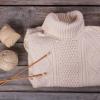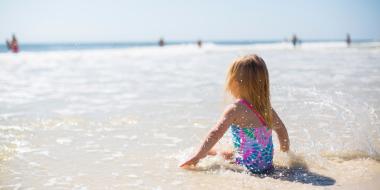If you think about it, a bird egg is a beautiful thing. Within this fragile, round container is the promise of new, feathered life. And bird eggs come in a surprising variety of shapes, sizes, and colours. But no matter what they look like, one obvious but indisputable fact deserves mention: eggs roll. And a rolling egg is not a safe egg. Keeping their eggs both warm and safe is the challenge every mother bird faces. That is why she makes a nest. Sometimes a bird nest is an elaborate affair like the woven, hanging nest of a northern oriole, or sometimes it is as simple as a hollow scrape in the ground like that of a killdeer.
How birds make a nest
At first blush, making a bird’s nest doesn’t seem that remarkable. But if you think about it, birds do have a handicap when it comes to building something: They don’t have hands! So they need to use their beaks and feet. Imagine making a nest using only your mouth and toes. And yet the nests that birds such as warblers, orioles and finches create from a few bits of grass, bark, twigs, and mud are truly wondrous examples of natural hands-free architecture. It is worthwhile to remind ourselves that humans aren’t the only builders on this planet — look at all the different types of nests there are!
|
Type |
Description | Bird |
|---|---|---|
| Mound | A small mound with a hollow in the center made out of mud and plant materials | Loon, flamingo |
| Burrow | An excavated hole in the ground or side of a hill | Kingfisher, puffin, burrowing owl |
| Cavity | Hollow cavity in a tree, often made by woodpeckers | Woodpeckers, flickers, chickadees, bluebirds |
| Platform | Large nests that are often constructed on the tops of trees, telephone poles and man-made platforms. New material is often added each year | Ospreys, eagles, great blue herons |
| Pensile | A woven nest supported from the sides, often located at the tips of trees so that predators have difficulty reaching them | Northern orioles, Bullock orioles, vireos, kinglets |
| Cup | Located on top of a branch or in the crook of a tree, a cup nest is woven together out of materials such as mud, plant material, spider’s silk and moss. They are self-supporting and are shaped like a bowl. | Robins, hummingbirds, barn swallows |
How the robins do it
One of the most common nests you'll find in urban and rural settings are those made by the American robin. This is a perfect example of a cup nest. A male and female robin will work together. They’ll try to find a site shielded from sun, wind, and rain, and hidden from predators. Robins always begin building their nest on something solid — a ledge, a window sill, or a forked tree branch. Each pair of robins will collect over 350 individual fibres of grass, twigs, and wildflowers. At times they’ll even weave in bits of paper and plastic bags, whatever is close at hand (or beak!). Robins will wait until after a soaking of rain to scoop up beakfuls of mud. A pair of robins will make several hundred trips back and forth to collect enough quantities of mud to act like a binding agent to hold all the plant fibres together.
Next, they’ll use their feet and beak to weave the fibres and mud together. They’ll make sure the nest is securely anchored to whatever is underneath, and they’ll use their tummy to shape and sculpt the sides. Lastly, they’ll line the inside of the nest with soft grass, their own feathers, and bits of fur. The nest will have to be small enough to keep the heat in and the eggs warm, but big enough to accommodate growing chicks and mom. A clutch of baby robins can weigh up to 300 grams when they are ready to leave the nest!
Be a bird’s apprentice
You can also try to find out what human-made materials birds like for their nests. In early spring, cut 6” and 9” pieces of four different colours of yarn, string, and cloth (narrow strips). Put some on the ground close to a window and stick the rest between the scales of pine cones – just loose enough so birds can easily pull the pieces out. Add some hair from a hairbrush. Using string, suspend the cones outside the window. Keep track of what materials and colours the birds prefer.
How to make birds' nests!
If you’re really ambitious, you can be a nest “contractor” and rent your nest out like a bird landlord!
What you’ll need
A bucket of warm, soapy water, nice gooey mud (you can mix soil and water), lots of dried plant fibres (soft dried grass, wildflowers), and, of course, patience!
- Begin by making a mud and plant fibre pancake – or a round, flat disk of mud and plants. Scrunch the fibres together with globs of mud. Mix, knead, and mix again. You should have a pancake about 6 inches (18 cm) in diameter and about ½ inch (1 cm) thick.
- Make 4 long fibre and mud cylinders, about 4 inches long and ¾ inch thick. Roll, mix, and roll again.
- Using mud, stick these mud cigars to the perimeter of the pancake. Knead them all together using plenty of mud. Knead and knead some more until everything binds together.
- Sculpt the sides by squeezing, pressing, and adding more mud as required.
- Line with soft grasses, tufts of downy seeds. Let dry.
- Place your nest on something sturdy and watch what happens. You never know – a robin may adopt this nest as their very own!
Consider participating in NestWatch, a nationwide monitoring program designed to track the reproductive biology of birds, including when nesting occurs, number of eggs laid, how many eggs hatch, and how many hatchlings survive. This data is used to study the current condition of breeding bird populations and how they may be changing over time. The NestWatch website also has a great deal of information on bird boxes. Happy birding!






